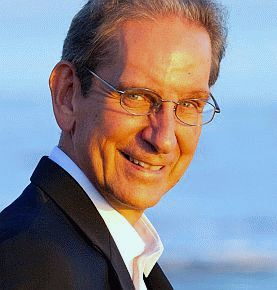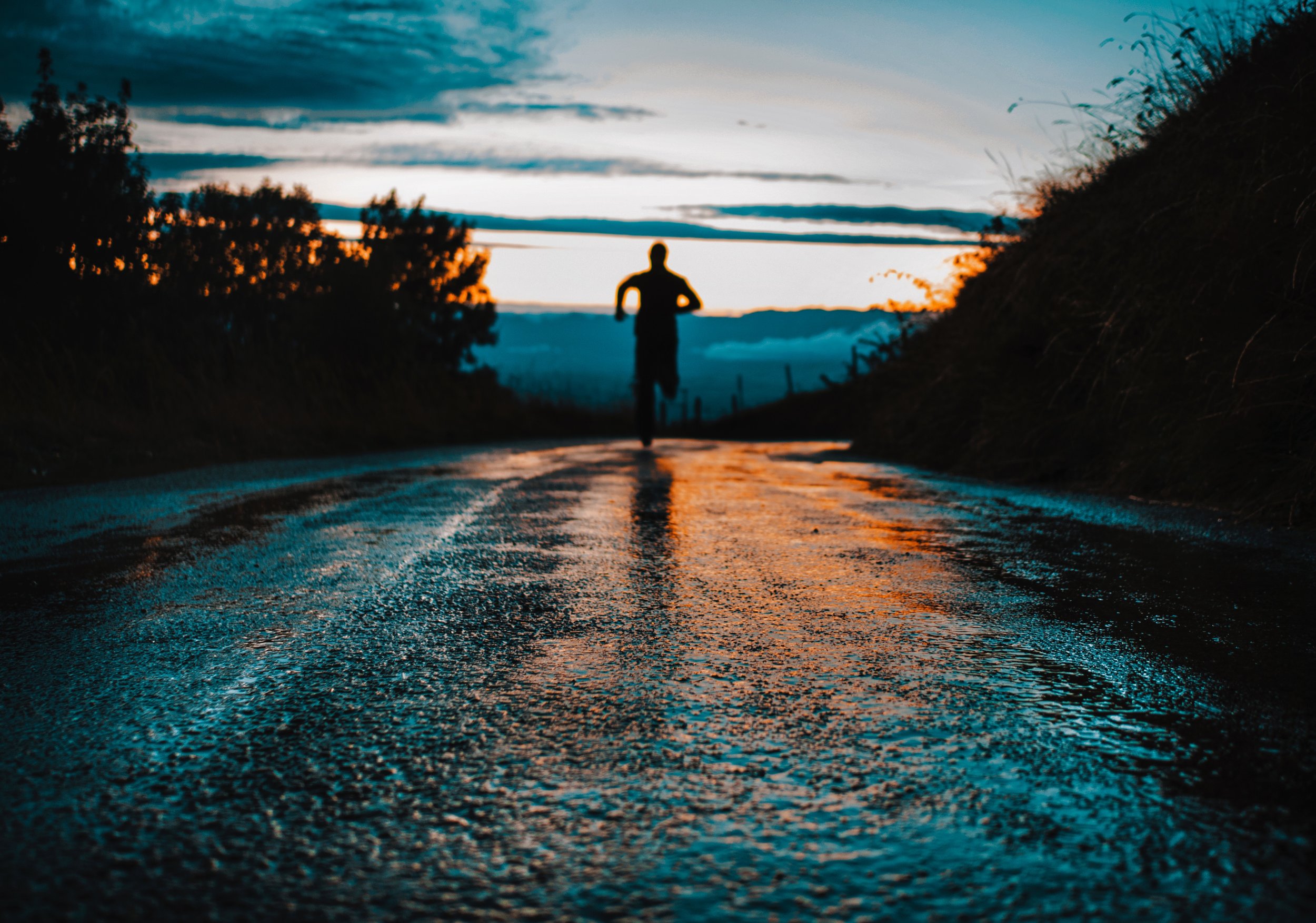“I say it’s important to eat more,” says Dr. Longo. If you are eating the best stuff, he encourages you to load up during meal times. That’s because if you are eating a high-fiber diet filled with vegetables and legumes, then your stomach will become full without craving more food continuously throughout the day. “Lots of fiber is very important so you don’t get hungry,” he says. “You’re not going to be hungry two hours later because the stomach is still busy processing everything and so you don’t feel like eating right away.”
Dr. Longo says this is especially true if you are eating a pound of legumes per day, which is about the amount needed for a 150-pound person to get enough protein.
He also recommends eating within a 12-hour window each day (for example from 8am — 8pm) and fasting for the other 12 hours. “Eat for about 12 hours a day — not much shorter and not much longer,” he says. “There are negatives on both sides.”
If you fast much longer than 12 hours, Dr. Longo says that can lead to problems with gallstones and shorter lifespan. So if you are fasting for 16 or more hours each day (for example following the 16/8 Intermittent Fasting method), you should reconsider your approach. “If people fast too often they seem to live shorter, says Dr. Longo. “Fast too often meaning they do 16, 18 hours every day of fasting.”
This approach is especially problematic if you are skipping breakfast, which has become a popular trend among intermittent fasters. “People that skip breakfast live shorter,” Dr. Longo told me emphatically. He says this finding is surprising to many people in the longevity field, but study after study proves it out.
But eating all day and all night is also a problem. “The people that eat for 15, 16 hours a day, they also don’t do so well because they become overweight, obese, and they develop insulin resistance,” says Dr. Longo. So 12 hours on, 12 hours off seems to be the sweet spot.
For healthy people, Dr. Longo says 3 healthy meals per day plus a low-sugar snack is perfectly acceptable. People who are overweight or obese should consider replacing one of the meals with a snack. But the snack could still have lots of volume — for example, a big salad with olive oil would be an ideal snack (or smaller third meal) if somebody has weight problems.
That covers the fundamentals of the daily longevity diet, including what to eat, how much, and when.
The next pillar of longevity is a periodic 5-day dietary intervention called the “Fasting Mimicking Diet,” which resets and rebuilds the body at the cellular level.
Fasting Mimicking Diet
Dr. Longo first discovered the Fasting Mimicking Diet about 11 or 12 years ago when he was studying the effects of fasting in combination with chemotherapy for cancer patients. That combination proved to be very beneficial, but adherence was low. The patients did not want to do a water-only fast, and the oncologists didn’t want their patients to fast.
But through this process Dr. Longo learned what the fasting was doing at a cellular level, and he set out to develop a system to fool the cells into entering a fasting-response mode while still allowing the patient to eat. That’s how the Fasting Mimicking Diet was born. It has all of the benefits of fasting, without the suffering.
From a practical standpoint, the Fasting Mimicking Diet is a periodic 5-day calorie-restricted diet. It is 100% vegan, low in protein, low in sugar, and high in good fats. You consume about 1100 calories on day 1, and then about 800 calories per day on days 2–5.
The specific foods you eat include vegetable and grain-based soups, kale crackers, olives, nut-based bars, Algal Oil (rich in Omega-3), vitamin and mineral supplements, as well as drinks and teas (Hibiscus, Spearmint, etc.) that mimic what the body produces naturally during fasting. You can order ready-made kits from Dr. Longo’s company ProLon (Dr. Longo donates 100% of his profits to charity and research).
The specific ingredients included in the Fasting Mimicking Diet have been shown to promote beneficial bacterial growth. “The microbiota — the positive, protective bacteria that we have in the gut — is greatly altered by these cycles of the Fasting Mimicking Diet,” says Dr. Longo. This is not the case with water-only fasting, so Dr. Longo suspects it is the prebiotic content of the diet that feeds the good bacteria and allows that good bacteria to clear out the bad bacteria.
The Fasting Mimicking Diet appears to cause what Dr. Longo calls multi-system generation.
“What happens if you shrink an organism and then you re-expand it?,” Dr. Longo questioned. “What seems to happen — and we’ve shown it over and over and over — is that when you shrink it, you get rid of lots of junk. Bad cells, damaged cells, damaged cellular components. And then when you re-expand, you utilize stem cells and other templates to rebuild. And when you rebuild, you rebuild younger or brand new.”
It is a powerful dietary intervention that works in combination with the healthy daily longevity diet.
In terms of how often to do the 5-day Fasting Mimicking Diet, that depends on your baseline level of health. If you are young, eat a perfect diet, and exercise regularly, you might only need to do the Fasting Mimicking Diet once a year. But that’s if you are doing everything exactly by the book. If you eat pretty well and are generally healthy, then maybe twice a year is appropriate. But for most people — especially those with slightly elevated cholesterol, blood pressure, and fasting glucose — 3 or 4 times per year is recommended.
Dr. Longo says a healthy person can do the Fasting Mimicking Diet without medical supervision, but if you have an existing disease or medical condition, it is best to consult with your doctor before beginning the protocol.
Exercise
Let’s get this out there right away — Nutrition is the most important factor for longevity. Exercise is a distant 2nd.
“I would say exercise is very far away from nutrition in terms of longevity,” says Dr. Longo. “This is very clear from animal studies that diet is really superior.”
The important thing regarding movement seems not to be exercise, but routine physical activity. Dr. Longo points out that centenarians and people with record longevity (for example, in the Blue Zones) do not consciously exercise. But they are very physically active — growing gardens, walking, dancing, going up and down stairs, and moving naturally all throughout the day. “Lots of physical activity — I think that’s essential,” says Dr. Longo.
He urges people to walk everywhere possible and always take the stairs — a simple and practical recommendation that can make a tremendous difference in your life. “If you live 30 minutes away from your work and every day you just do that, you’re already 80% of the way there,” says Dr. Longo. “And if you just go up the stairs 300 or 400 steps a day, that’s already very good.”
The data shows that dedicated exercise does provide some additional benefit as well. “If you look at the meta-analysis, the epidemiological studies, it seems that exercise can make things a little bit better and reduce mortality further, in addition to physical activity,” says Dr. Longo. “So absolutely it is good.”
Dr. Longo recommends 150 minutes of exercise per week. And he says some of that (10–15%) should be vigorous, really pushing yourself. Bursts of intense exercise seem to be very beneficial to the body, perhaps because the body gets stressed and slightly damaged, and then re-builds stronger (similar to the process that takes place during fasting).
At the end of the day — between routine physical activity and dedicated exercise — Dr. Longo says a good goal is 10,000 steps and 20 flights of stairs. Your cell phone keeps a record of these totals, so it is a good practice to check and track how you are doing.
Dr. Longo’s Personal Routine
“My personal routine is pretty much what’s in the book,” Dr. Longo told me.
He eats a small breakfast, starting his day with tea and bread with low-sugar jelly. He then doesn’t eat anything until lunch.
For lunch, he often eats two courses — for example, a big salad with anchovies, followed by roasted or steamed calamari. He eats all of that along with bread or pasta.
Dr. Longo spends close to half the year in Milan and confessed that when he’s in Italy, he tends to gain a little bit of weight. When he starts to put on unwanted weight, he adjusts his lunch accordingly. “If I’m in weight gain mode, then I remove for sure the bread or the pasta for lunch,” he told me. “But I also oftentimes remove the second course.”
For dinner, he eats just about the same thing every day. He has a big dish that is filled with legumes, vegetables, and small amounts of starches. For example, the dish might have 10 ounces of chickpeas, 4 ounces of mixed vegetables, and only 2 ounces of pasta.
And then he has multiple variations of that meal. For example, the chickpeas and mixed vegetables might be swapped out for beans and broccoli. So there is a little bit of variety, but these rotations always follow the same nutritional profile.
This high-fiber diet keeps him full between meals and he typically only has one snack during the day. “Usually I have dark chocolate — like 85% dark chocolate — as a snack,” he said.
As for exercise, he does 40 minutes every other day on his home exercise bike. He puts it on the steepest uphill setting, making it hard to pedal, and then he turns up the intensity for about 4–6 minutes of the workout. On the weekend, he might go outside for a run or bike ride, but his home exercise bike is most convenient during the busy work week.
When in Milan, he also walks 45 minutes each way to work, and he never takes an elevator anywhere.
My Personal Takeaways
Dr. Longo is undoubtedly one of the leading experts in the field of health and longevity. He lays out a very sound plan grounded in 25 years of science and data. I am confident that following his protocol would result in a longer and healthier life.
As for me, I have been a habitual exerciser for much of my life. So I already more or less follow his exercise recommendations. And I eat pretty well — although I am certainly not perfect, and there have been periods in my life when my diet was not so great. Going forward, I will do my best to follow Dr. Longo’s Vegan/Pescatarian daily diet — but I am sure I will cheat and have the occasional burger and fries. Not to mention some potato chips and dessert.
That’s why I think the Fasting Mimicking Diet intervention could really be a game-changer. Very few people eat a perfect diet every single day, and some of the joy in life is eating indulgent foods. But if you can eat a good overall diet and then essentially reset and renew your body with the Fasting Mimicking Diet, that is a very enticing proposition.
I plan to try my first Fasting Mimicking Diet next month. I will report back with my experiences.
Until then, I hope you have found Dr. Longo’s recommendations helpful and applicable to your own life.
Andrew Merle writes about healthy living. Read more and subscribe to his email list at andrewmerle.com.























